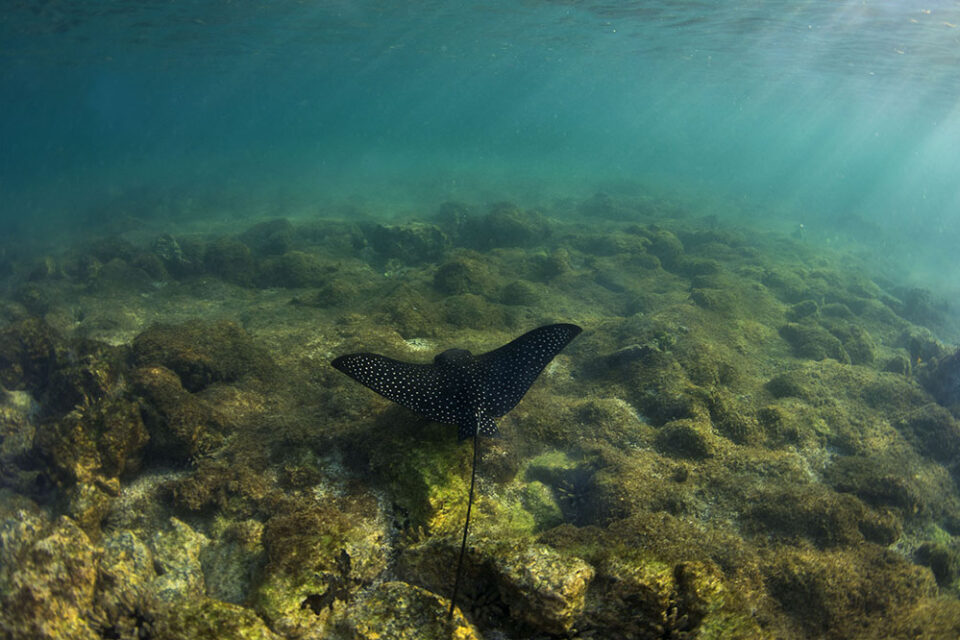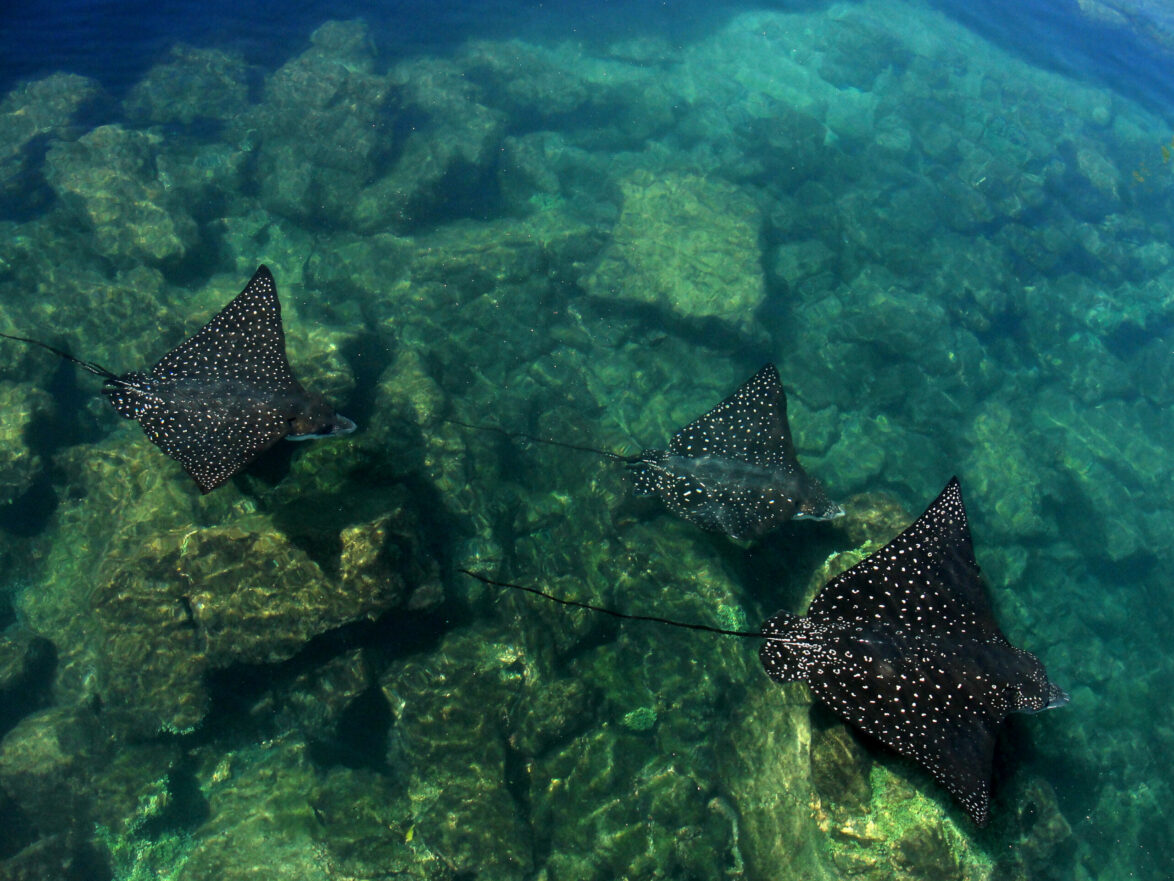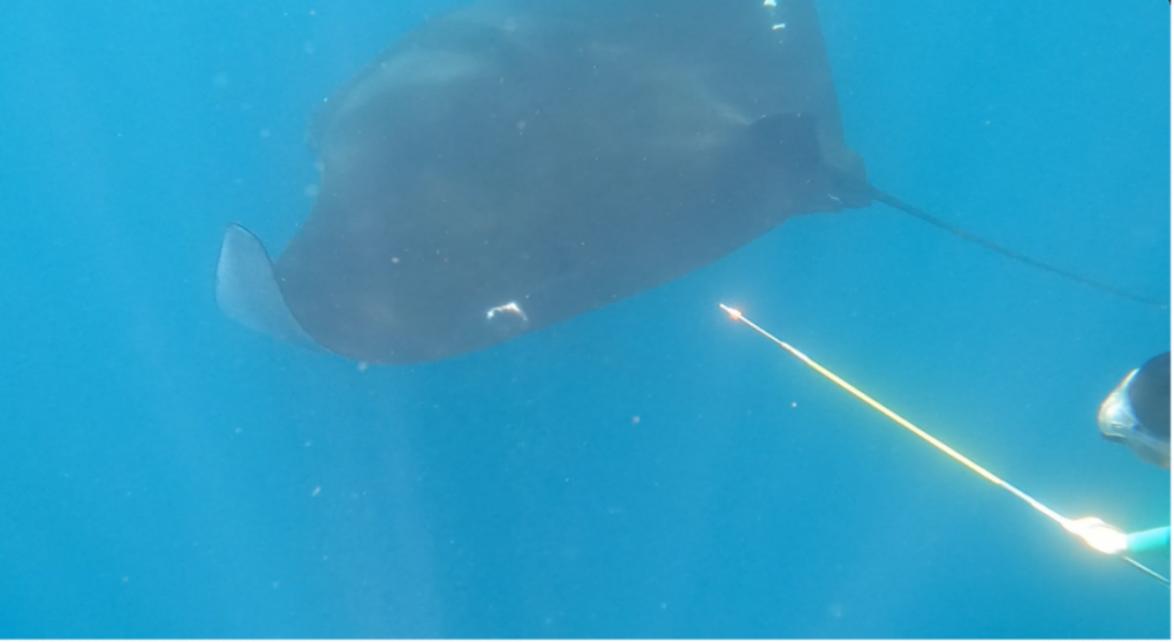

Galapagos Rays Project Update 2022
An update from the field as our Endangered Rays of Galapagos project, led by Dr Diana Pazmiño, continues vital work researching and protecting three species of rays found across the Galapagos Archipelago.
Surrounding the Galapagos Archipelago is a stretch of protected ocean called the Galapagos Marine Reserve (GMR), home to over 50 species of sharks and rays. There is very little data for rays in Galapagos, meaning their population status and conservation needs are poorly understood. Dr Diana Pazmiño leads our Endangered Rays of Galapagos project, investigating three different ray species found across the Archipelago: giant oceanic manta rays (Mobula birostris), golden cownose rays (Rhinoptera steindachneri) and spotted eagle rays (Aetobatus ocellatus).

Giant oceanic manta rays have been found in significant numbers around the coast of Isabela island. To effectively protect them from threats like fishing and tourism activities, it is essential to conduct research to find out more about their population dynamics. This includes where they go, their population status, and how many there are. Once these questions have been investigated, we can collectively work towards ensuring their conservation needs are met.

Rays of Galapagos
Galapagos is home to 15 different ray species, including the spotted eagle ray, the golden ray and the manta ray.
Ray Nursery Grounds
Around the islands of Isabela and San Cristobal are sheltered mangrove lagoons that make the perfect nursery grounds for both sharks and rays. Due to the lack of data on rays, Galapagos Conservation Trust started supporting research into juvenile golden cownose and spotted eagle rays in 2021 to help shed light on their populations within the mangrove lagoons. The two main ways the researchers investigate this is by using drones to locate and count the number of rays, and then find the rays and take tissue samples for genetic analysis.
Since the start of the year, two trips have been conducted to attempt to complete drone surveys on identified nursery sites on Isabela Island. Unfortunately, no rays were found in January, thought to be due to the Tonga tsunami affecting ocean conditions in the south of Galapagos that week. However, there were three sightings of golden cownose rays in February, which are lower numbers than we would expect for this time of year. Sadly, all had injuries to their dorsal area, so the team decided not to take tissue samples for genetic analysis. These injuries could have resulted from boat strikes from tourism or artisanal fishing activities. Better luck was had on San Cristobal island as six spotted eagle rays were observed, and successful tissue samples were taken as there were no injuries to the rays.

Manta Rays
While the team have found few juvenile rays so far, they had better luck in their efforts on the open sea around Isabela searching for manta rays. Over 32 tissue samples were collected from giant mantas in just three and a half days across January and February. Taking tissue samples to analyse their genetics is crucial to assess population status and understand connectivity within the Galapagos Islands. Samples will also be used to compare to the manta populations off the coast of mainland Ecuador. In February, ocean conditions had also improved enough for the team to take photo-ID pictures of three mantas, adding vital information to the growing database.
In the upcoming months, we plan to continue sampling all three ray species, tagging mantas and adding to the photo-ID database, continuing drone surveys of juveniles in the mangrove lagoons, and laboratory processing, including DNA extraction and genetic analysis of tissue samples.
> 32
tissue samples collected from giant mantas in January and February
Support our ocean protection work
Ways to support our conservation work in Galapagos include becoming a member, donating to an appeal, adopting an animal, attending an event, volunteering or entering our photography competition.
Related articles



